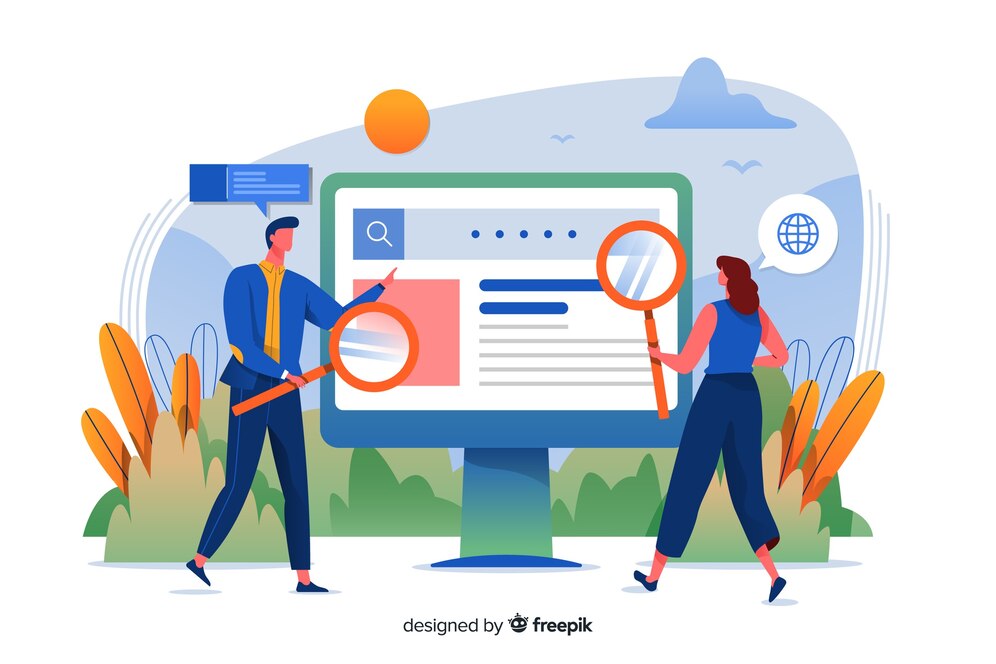Highlights
- High web page visibility, achieved through effective keyword optimization and on-page SEO.
- A well-optimized web page that’s easy to find can generate more leads and drive higher sales.
- Better visibility than competitors can help you attract more visitors and stand out in a crowded online market.
- Technical SEO is essential for both user experience and search engine rankings.
- Conducting regular SEO audits helps identify and fix issues like broken links, duplicate content, and redirection problems.
Are you struggling to get your web page noticed on Google? In 2024, the competition for online presence is stronger than ever, and simply having a website isn’t enough. Your web pages must stand out, attract traffic, and rank high in search results. If you’re wondering how to improve your web page visibility on Google, read this guide.
In this, we’ll discuss 5 strategies for the improvement of web page visibility on Google. Read on to discover the essential tips and techniques to make your website a top contender in this year’s search results!
What Is Web Page Visibility?
Web page visibility is how easily users can find and access a web page through search engines, social media, and other platforms. High visibility is essential for businesses and organizations because it helps them engage their target audience, generate leads, and boost brand awareness.
Why Is Web Page Visibility Important?
- More Visitors: If your web page appears high in search results for popular keywords, you’ll get more visitors looking for what you offer.
- Brand Recognition: The more people see your web page, the more they’ll remember your brand. This helps build trust and makes your brand stand out.
- More Leads and Sales: A web page that’s easy to find, with great content and a good user experience, can help you get more leads and make more sales.
- Beat Competitors: In a crowded online market, being more visible than your competitors can help you attract more customers and grow your business.
5 Tips for the Improvement of Web Page Visibility

Here are some effective strategies for improving your website’s visibility:
#1 Keyword Research and Optimization
Conduct Keyword Research
- Know your audience’s needs, problems, and the words they use.
- Platforms like Google Keyword Planner can help you find popular keywords. They show keyword difficulty and search volume.
- See which keywords your competitors use to find opportunities and gaps.
- Think about why people search for specific keywords. Align your content with their needs.
Optimize Website Content for Keywords
- Use your keywords in titles, meta descriptions, headings, and throughout your content. Avoid overusing them.
- Make sure your content addresses the topic of the keyword. Add search engines’ valuable, helpful, and relevant information for improvement of web pages visibility.
- Add keywords to images, videos, and other media. Use alt text for images to help search engines understand them.
Incorporate LSI Keywords
What Are LSI Keywords?
These are words related to your main keyword. For example, if your main keyword is “cherry,” LSI keywords might include “fruit” or “pie.”
They help make your content more relevant and understandable. Integrate LSI keywords into your content to make it more engaging and varied.
Use Long-Tail Keywords for Better Visibility
These are specific phrases, usually three to four words long, that people use when making a purchase or using voice search.
Benefits:
- Long-tail keywords attract visitors who are more likely to convert.
- They often have lower competition, making it easier to rank higher.
- They fit well with how people use voice search.
Use tools like SEMrush, Ahrefs, or Ubersuggest to find the right long-tail keywords for your niche.
#2 On-Page Optimization
On-page SEO includes all the strategies you use directly on a web page to improve its search ranking. Good on-page optimization helps search engines understand and rank your content while enhancing user experience.
Meta Tags and Descriptions
- Importance of Meta Tags: Meta tags give search engines information about your webpage. They help search engines find your content and can influence how often users click on your link in search results.
- Title Tag: This is the clickable headline in search results. It should be between 50-60 characters and include your main keyword.
- Meta Description: This summary (150-160 characters) describes your webpage’s content. An engaging meta description can increase click-through rates by encouraging users to visit your page.
- Header Tags (H1, H2, etc.): These tags define headings and subheadings in your content. They help organize your content and let search engines understand its structure.
#3 Create High-Quality Content
Crafting Compelling Headlines and Intros
- The Power of First Impressions: Your headline is the first thing readers see, determining if they’ll keep reading. A strong intro hooks readers and encourages them to engage with the rest of the content.
- Use Numbers and Data: Headlines with numbers (e.g., “5 Tips for…”) attract more clicks because they promise organized information.
- Address the Reader: Words like “you” or “your” make headlines more personal and engaging.
- Ask Questions: Pose a question that your audience might be asking themselves.
- Keep it Clear and Concise: Avoid jargon and be direct about what your content offers.
- Strong Intros: Start with a relatable problem, intriguing statistic, or bold statement to grab attention.
Structuring Content for Readability and SEO
- Balancing Human and Search Engines: While SEO is important, don’t forget the user experience. Structure your content to appeal to both.
- Use Subheadings: Break up your content with H2, H3, etc., to make scanning easier.
- Short Paragraphs: Avoid long blocks of text. Short paragraphs improve readability.
- Bullet Points and Lists: These make information easier to digest.
- Highlight Key Points: Incorporate bold or italics for important details to help skim readers.
Implementing Visual Elements for Readability and SEO
- Visuals Enhance Understanding: Use images, infographics, videos, and charts to break up text and add extra information.
- Relevant Images: Choose images that enhance or clarify your content. Avoid generic stock photos.
- Videos: This can increase time spent on your page and offer a multimedia experience.
#4 Technical SEO Optimization

Improvement of a web page visibility for short is referred to as SEO. But did you know those three letters represent much work and effort?
Your website might have amazing products, services, or content, but no one will know you exist online if it doesn’t appear on search engine results pages (SERPs). That’s where Search Engine Optimization (SEO) steps in, helping your site stand out in the vast online world.
Technical SEO focuses on improving how search engines crawl and index your web page. It’s like setting up your site’s infrastructure to ensure search engines and users can access and run it smoothly.
Improving Web Page Speed and Performance
- Compress Images: Use tools like TinyPNG or ImageOptim to reduce image file sizes.
- Minify Code: Minimize CSS, JavaScript, and HTML files to speed up loading times. Tools like UglifyJS and CSSNano can help.
- Use a Content Delivery Network: CDNs distribute content across multiple servers to improve loading times.
- Leverage Browser Caching: Store static resources locally on users’ devices to reduce server load.
- Reduce Redirects: Minimize redirects to avoid extra loading time. Ensure they are only used when necessary.
Mobile Optimization and Responsive Design
Do you know that 58.67% of website traffic worldwide comes from mobile phones?
- Responsive Design: Make sure your website adjusts properly to different screen sizes.
- Avoid Flash: Flash isn’t supported on many mobile devices. Use HTML5 for multimedia content.
- Optimize for Touch: Ensure buttons and links are large enough and spaced out for easy tapping on touchscreens.
- Test Your Mobile Site: Use Google’s Mobile-Friendly Test to check your site’s performance on mobile devices.
Ensuring Web Page Accessibility and Crawlability
- Use Semantic HTML: Use HTML elements like headings and lists to help search engines and assistive technologies navigate your site.
- Create an XML Sitemap: This file helps search engines understand your site’s structure.
- Robots.txt: Ensure your robots.txt file guides search engines on what to crawl and ignore.
- Structured Data: Use schema markup to give search engines extra information about your content. This can enhance search result snippets.
#5 Perform SEO Audits and Fix Errors
SEO audits help you understand how your web page is doing and find ways to improve its ranking in search results. Since search engines update their algorithms often, it’s smart to check your website regularly to see how these updates impact you.
An SEO audit also helps spot problems like duplicate content, content that competes with itself, redirection issues, and broken links. Fixing these problems can boost your website’s SEO and improve its search engine ranking.
Summary
The improvement of web page visibility is crucial for driving traffic, enhancing brand recognition, and increasing conversions. By implementing these 5 best techniques, you can boost your web page visibility and stand out in a crowded digital marketplace. Moreover, you will see better search engine rankings and a superior user experience within less time.
At Tambena Consulting, we understand that maintaining a high-performing website is crucial for your business’s success. For this, we offer website maintenance services to boost your page rankings. Contact us today to help you maintain a strong online presence!





